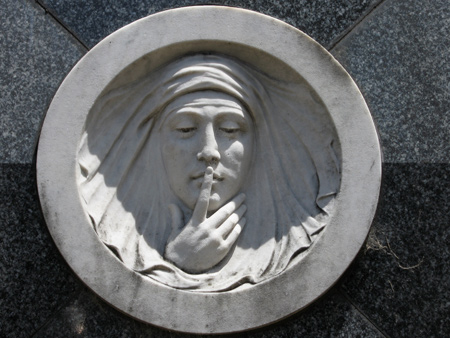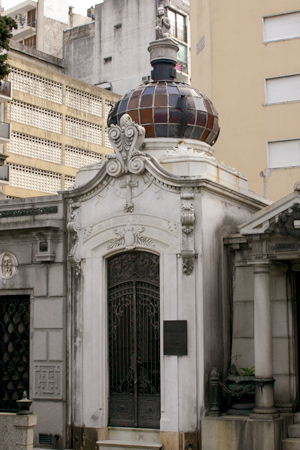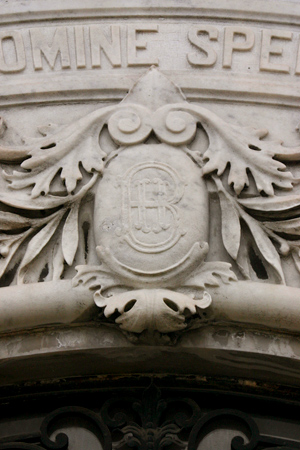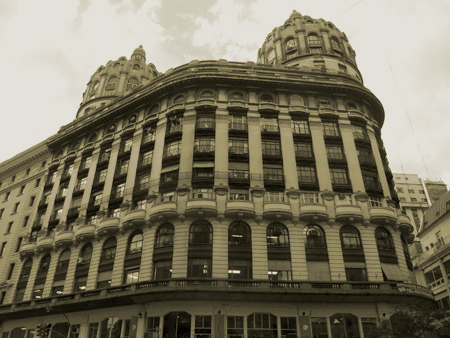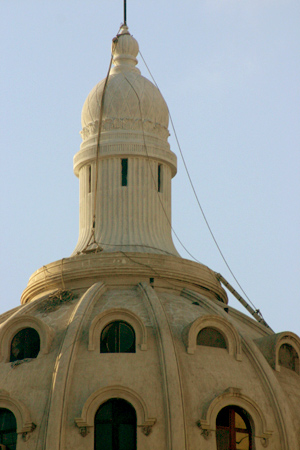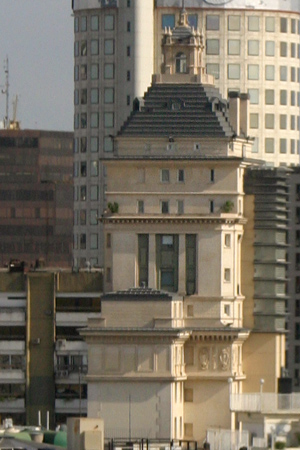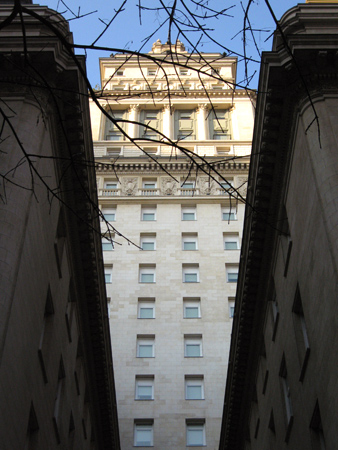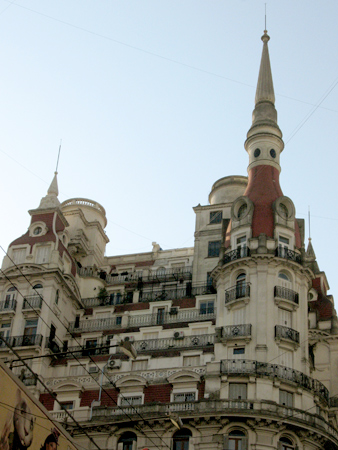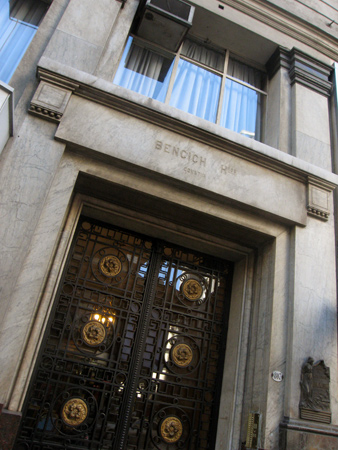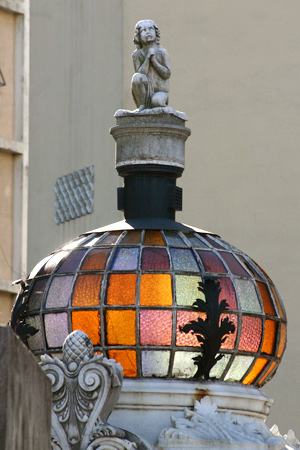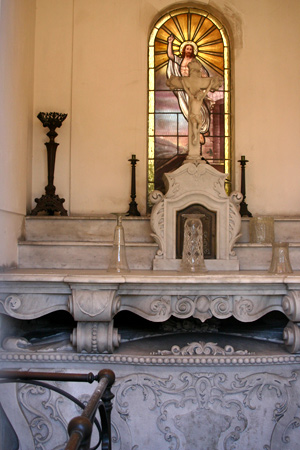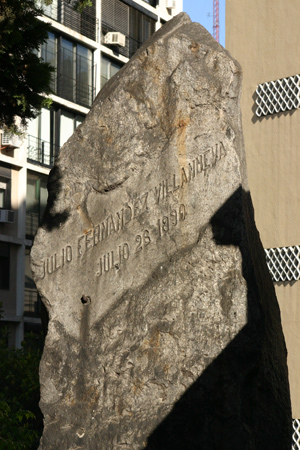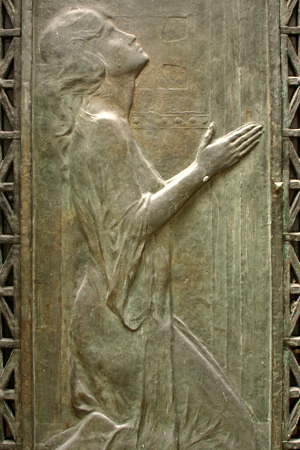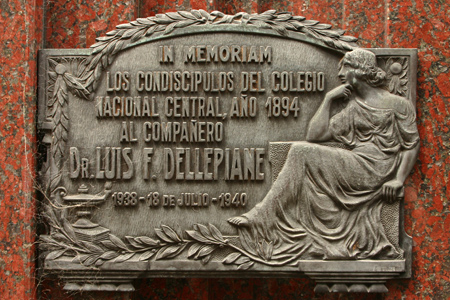Alejandro Machado should be thanked for continuing his quest to find forgotten & uncatalogged masterpieces by famous Buenos Aires architects. Earlier this year, he needed help finding the location of a particular vault in Recoleta Cemetery… supposedly designed by Mario Palanti, architect of the Palacio Barolo on Avenida de Mayo:
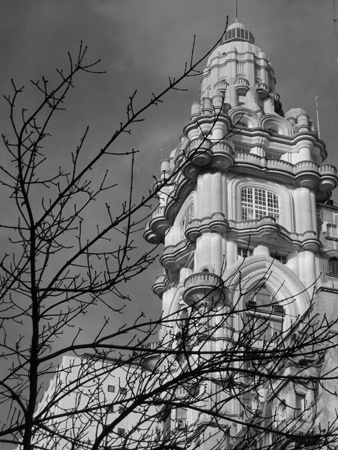
Graduating in 1909 from the same Milanese architecture school as Virginio Colombo, early recognition of Palanti’s talent brought him to Argentina the following year. A former professor included him in the team to construct the Italian pavilion for Argentina’s centennial celebrations. A hit with the public, young Palanti opened his own studio & began designing for the porteño elite. He lived in Buenos Aires until 1929 with the exception of World War I when he volunteered to serve his native country.
According to Machado’s source material, Palanti designed the tomb of Sebastián Vasena. Big, oversized, & located on a narrow walkway, it’s easy to miss & even more difficult to photograph. A ring of cherub heads with wings decorate the dome, & two eternal flame sculptures flank a large angel on the door. Even more stunning is the interior stained glass… only visible if the light is just right:
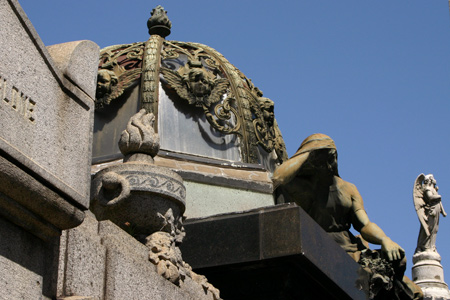
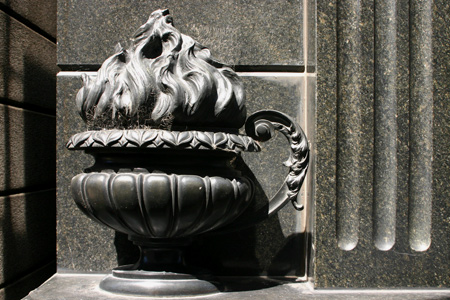
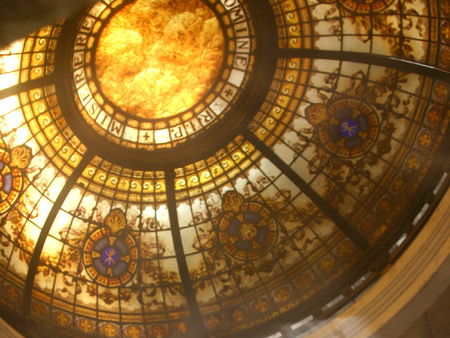
Although unsigned, Machado is still trying to confirm if the Vasena vault was in fact a Palanti creation. The same source also credits Palanti for designing the Spinetto family tomb. Could the most spectacular door in the cemetery also be the work of Palanti??
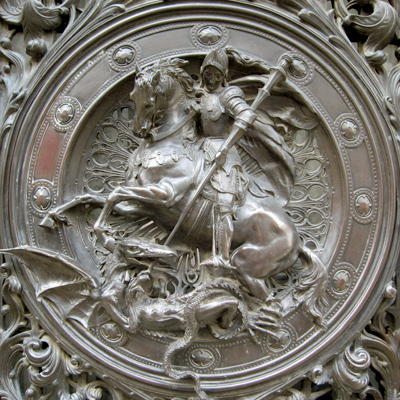
Update (24 Aug 2024): As it turns out, Palanti did not design the Spinetto family vault but instead oversaw its construction for Italian architect Gaetano Moretti… who could not come to Argentina at that time. More info here.
Leave a Comment